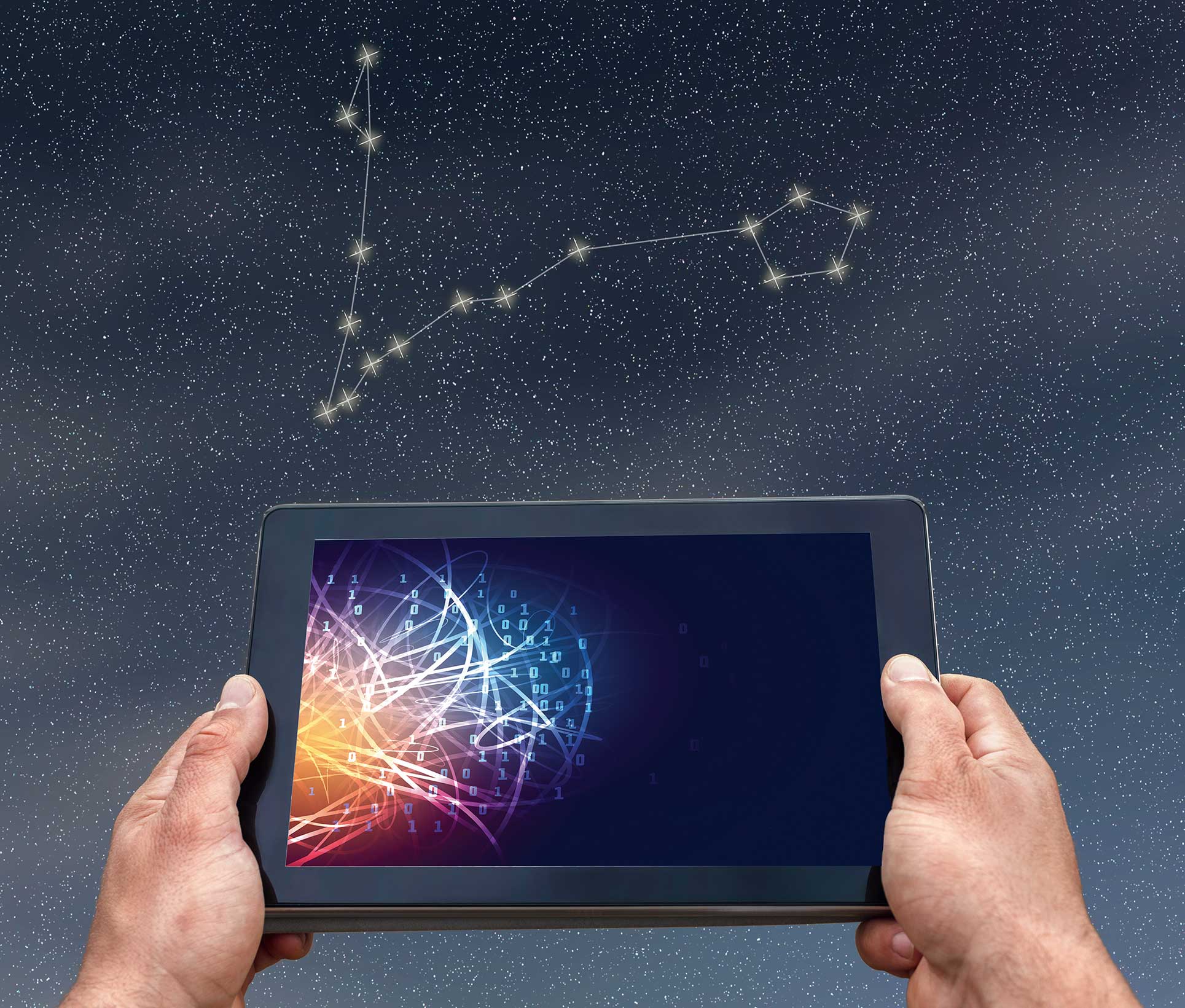Space is vast and peppered with galaxies, stars, planets, black holes and other celestial bodies. And while there are telescopes, both on earth and in deep space, taking constant readings of these and generating copious amounts of data, sifting through that deluge of information is a tedious and time-consuming process. How do astronomers cope? With the help of artificial intelligence. The machine learning tools developed for guiding self-driving cars are, it seems, perfect for sorting astronomic data.
In fact, “One of the two main branches of science that extensively uses artificial intelligence is astronomy,” says Somak Raychaudhury, a renowned astrophysicist and director of the Inter-University Centre for Astronomy and Astrophysics (IUCAA) in Pune.
But how do you come up with an algorithm for artificial intelligence if you don’t have a database? All you have to do is look at the sky, says Raychaudhury, who has worked with Stephen Hawking at the University of Cambridge, UK. “The elements in such a database would include galaxies and stars, and their attributes such as brightness, velocity, radioactive capacity and so on,” he explains.
There are various principles and algorithms that artificial intelligence has given rise to, which are used in multiple domains across the world. In astronomy, the system used most widely is the concept of neural networks — a framework mimicking the system of nerves in animal brain. This model has helped make advancements in stock markets, medicine and image processing as well as in the further understanding of galaxies, stars and planetary bodies.
Machine learning can be employed to study the internal structure of a star but before that the algorithm has to acquaint itself with a series of previous inputs and corresponding outputs relating to stars. To understand this concept, think about the technology behind a fingerprint-locked smartphone. When you register your fingerprint on the mobile phone, a program embedded inside asks you to place your thumb in different positions, so that it can gather all the data it needs. If someone else then tries to unlock your phone, the artificial intelligence will identify that person as someone who is not you. The same principles are used to identify galaxies and exoplanets. The principles used in face recognition can also be applied to studying galaxies.
The more data an intelligent algorithm gathers, the better it can predict a result. For example, a computer might be able to predict whether a planet orbiting binary stars remains in a stable orbit. According to theory, if it does exhibit characteristics of remaining in a stable orbit, it is said to be a habitable planet. So, that advances studies which want to find whether a planet can sustain life.
Machine learning also allows computer programs to fill gaps in knowledge. The data that scientists infer from studies is completely based on experimental work. Sometimes, this leaves “blind spots” in the information. If an algorithm is trained enough, it can join the dots and connect disjoint groups of data to amount to a whole. This concept can be seen in “image inpainting”, or the art of digitally restoring an image by removing defects and blemishes. When applied to astronomic data, these algorithms can give you answers that might shed light on certain unknown aspects of the universe.
But do machine learning systems ever reach a point where they can discover the secrets of the universe on their own? Can we train an artificial intelligence system to detect gravitational waves or dark matter — whose exact features scientists themselves do not fully know? Raychaudhury says, “What is interesting in astronomy — more than in any other field — is that it is a science that actually constitutes finding new kinds of objects.”
And that is where a machine learning principle called unsupervised learning comes in. Here, the algorithm does not compare information with a predetermined data set but goes beyond the norms to analyse the outliers of statistical data. How do you identify alien intelligence? Definitely not by the parameters with which human intelligence is measured. But, “to define the extraordinary, you have to know what is ordinary,” points out Raychaudhury.
Space is filled with infinite “multivariate” data — tables, lists, images, much of which humans have inferred, and an even bigger universe of information that is yet to be discovered — the perfect analogy for “big data”, based on which today’s machine learning algorithms are built. That is why we need artificial intelligence to speed up astronomic research.
Till then, citizen scientists can help astronomers crunch data at websites such as Virtual Observatory, Galaxy Zoo and Zooniverse.
Where to learn
- The Inter-University Centre for Astronomy and Astrophysics (IUCAA) in Pune provides programmes and courses for students to integrate astronomy principles with machine learning
- The Indian Institute of Space Science and Technology (IIST) in Thiruvananthapuram offers an MTech in Machine Learning and Computing
- National Centre for Radio Astronomy (NCRA) in Pune provides opportunities to integrate electronics and computation with space science.










